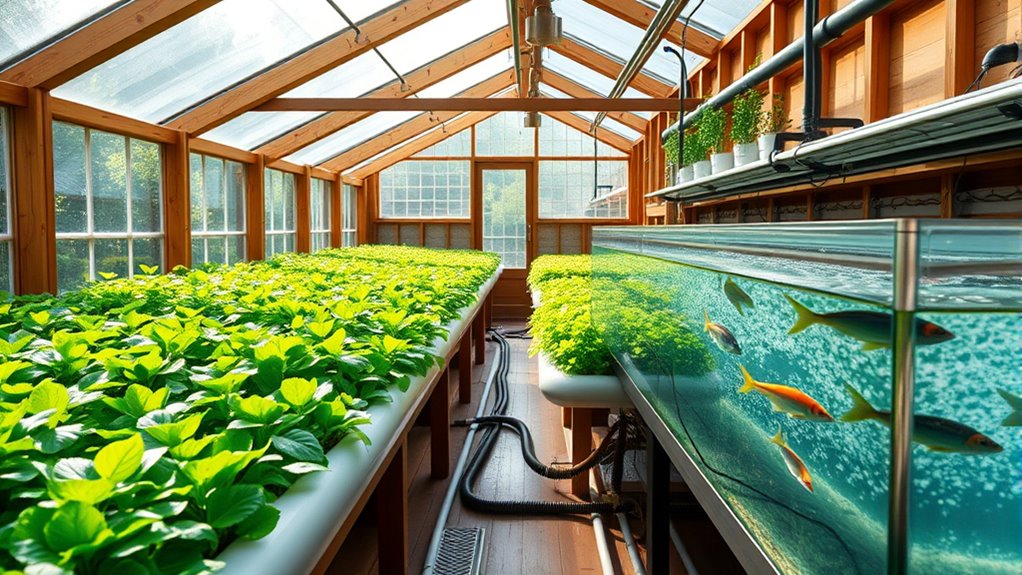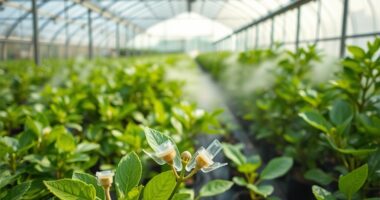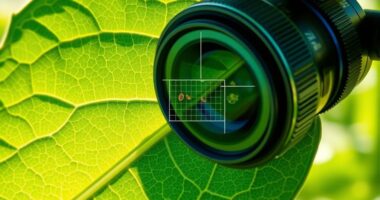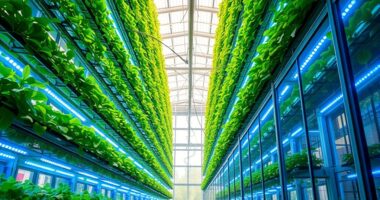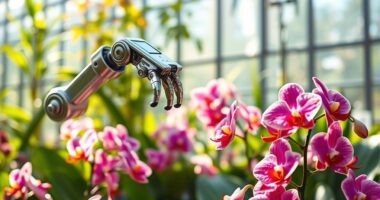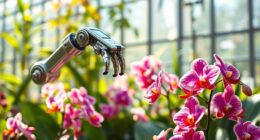Setting up an aquaponics system in your greenhouse starts with choosing the right greenhouse type based on your budget and climate. Next, pick hardy fish, like tilapia, and fast-growing plants, such as leafy greens. Design your greenhouse to incorporate fish tanks and grow beds efficiently. Regular maintenance is essential, so monitor water quality and check for pests. If you want to ensure a thriving aquaponics system, there's so much more to explore!
Key Takeaways
- Choose the right greenhouse type based on budget, space, and climate, ensuring it supports optimal plant and fish growth.
- Select fish species like tilapia or catfish that thrive in your greenhouse's temperature range and meet local regulations.
- Design your aquaponics system with proper water flow, utilizing grow beds and bell siphons for efficient nutrient cycling.
- Maintain a routine for monitoring water parameters, fish health, and plant growth to ensure system stability and productivity.
- Troubleshoot common issues by regularly checking water quality, oxygen levels, and equipment functionality to prevent system disruptions.
Choosing the Right Greenhouse and System Type
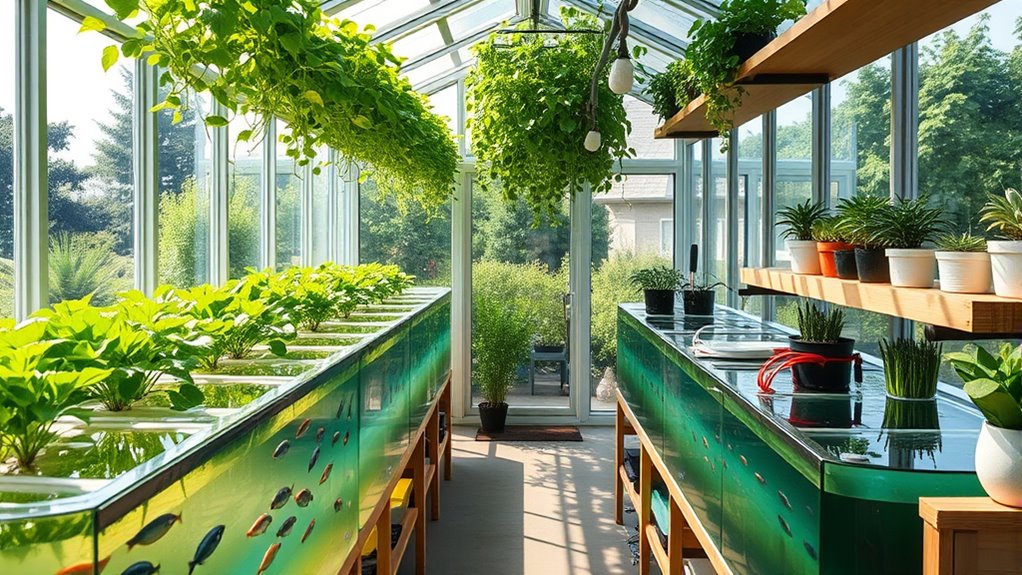
How do you choose the right greenhouse and aquaponics system for your needs? Start by considering your budget, space, and local climate.
Polycarbonate greenhouses offer durability and insulation, while hoop houses are an affordable option for small setups. If you prefer a unique design, geodesic domes provide excellent structural integrity. Greenhouses convert light energy into heat energy, which is essential for maintaining optimal growing conditions. Additionally, effective co-parenting can help ensure that children are involved in the process, making it a family affair.
For aquaponics systems, think about media-filled beds for beginners or deep water culture for rapid growth. An effective growing environment is crucial for the success of your aquaponics system.
Make sure your greenhouse layout allows for easy maintenance, with fish tanks typically along the north wall for temperature stability.
Prioritize ventilation to prevent humidity issues and ensure healthy plant growth.
With these factors in mind, you'll find the perfect combination to thrive in your aquaponics journey.
Selecting Fish and Plant Species

Selecting the right fish and plant species for your aquaponics system is crucial to its success.
Start by researching local regulations on fish farming to ensure compliance. Choose fish that thrive in your greenhouse's temperature range; tilapia and catfish are hardy options, while trout needs cooler conditions. Fast-growing species like tilapia can provide quicker returns, so consider your goals. Additionally, it's important to maintain a symbiotic ecosystem where fish waste nourishes plants while plants purify the water, ensuring both thrive together.
For plants, leafy greens and herbs such as lettuce and basil are excellent choices due to their low nutrient needs and fast growth. If you're interested in vegetables, tomatoes and peppers are rewarding but require more nutrients. Always aim for a balanced ecosystem where fish waste nourishes plants while plants purify the water, ensuring both thrive together.
Setting Up Your Aquaponics System
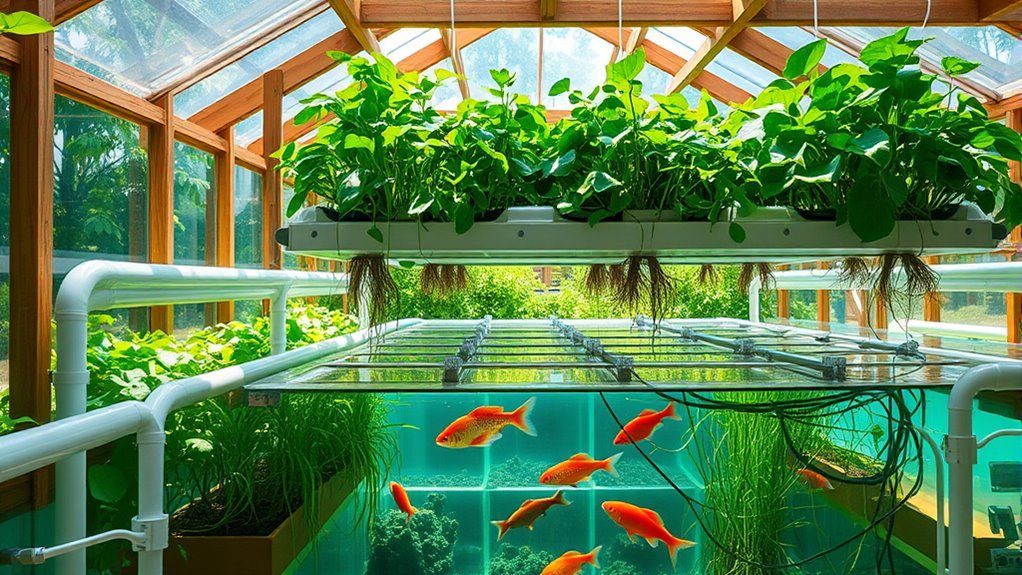
With the right fish and plant species chosen, you're ready to set up your aquaponics system.
Start by designing your greenhouse to accommodate the system's needs, considering space, lighting, and ventilation. Position your fish tank in a shaded area to prevent overheating, ensuring one gallon of water per inch of fish. This setup creates a mutually beneficial environment for both fish and plants.
Install grow beds filled with media like clay pebbles, positioning them in sunlight. Connect your fish tank and grow beds using PVC pipes, regulating water levels with bell siphons.
After filling the system with water, stabilize temperature and pH, and introduce beneficial bacteria to kickstart the nitrogen cycle. Allow 4-6 weeks for stabilization before gradually adding fish and plants to your system.
Maintenance and Monitoring Best Practices
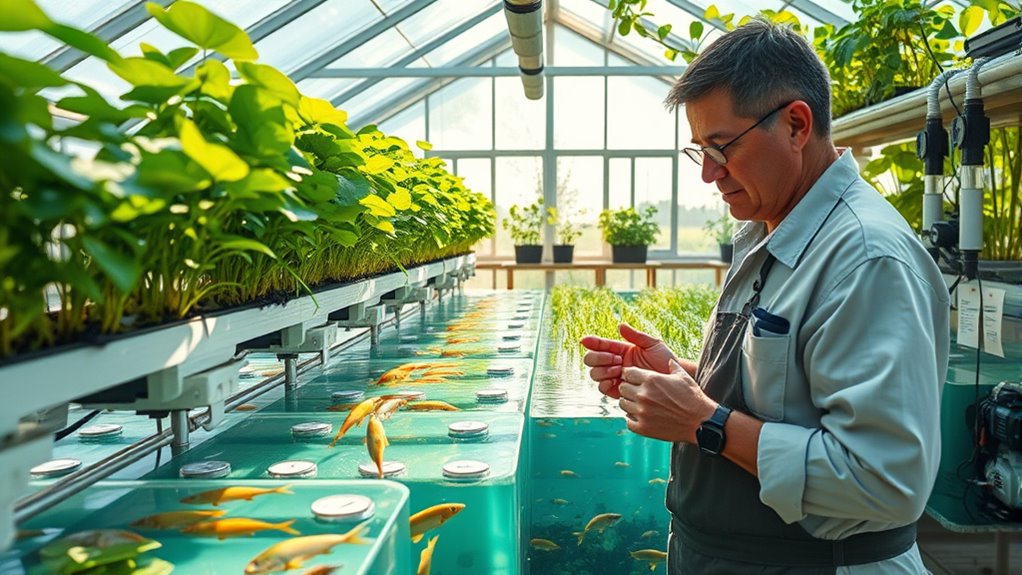
While maintaining your aquaponics system may seem daunting, establishing a routine of daily, weekly, and monthly tasks can simplify the process. Start each day by monitoring water parameters like pH and temperature, checking fish health, inspecting plants for pests, managing water levels, and cleaning filters. Regular maintenance is crucial for optimal system health, ensuring that all components function effectively and contribute to plant and fish well-being. Weekly, clean your grow beds, inspect the biofilter, and ensure pumps and aerators are functioning well. Don't forget to check for insects and test pH and ammonia levels. Monthly, conduct thorough water quality testing, adjust pH as needed, inspect plumbing, and clean pumps and pipes. Also, monitor nutrient levels.
Troubleshooting Common Issues

How can you ensure your aquaponics system runs smoothly? Start by monitoring water quality. Check the pH regularly; imbalances can harm both fish and plants. If you notice cloudiness, it might indicate excess solids or algae. Ensure nutrient levels are adequate to promote healthy growth. Watch for low oxygen, which stresses fish and roots, as maintaining adequate oxygenation is crucial for both fish and plant health.
Next, keep an eye on equipment. Regularly inspect pumps and filters to prevent failures that disrupt circulation.
Regular inspections of pumps and filters are crucial to maintain smooth circulation in your aquaponics system.
Don't forget about plant and fish health. Address overcrowding, pest infestations, and diseases promptly.
Lastly, check for structural issues like plumbing leaks or cracks that could compromise your system. By staying proactive, you'll troubleshoot problems before they escalate.
Frequently Asked Questions
How Much Space Is Needed for an Aquaponics System?
The space needed for an aquaponics system really depends on your chosen scale and design.
Smaller setups can fit in compact areas, while larger systems require more room for fish and plants.
You'll need to consider the species you're growing, as larger plants and fish need more space.
If you're maximizing vertical growth, you can optimize your area.
Ultimately, it's about balancing your production goals with the available space.
What Is the Best Location for My Greenhouse?
You might think any spot will do for your greenhouse, but choosing the right location is crucial.
Aim for a site that gets at least 6 hours of direct sunlight daily, ideally with a south-facing orientation.
Ensure it's easily accessible, has a nearby water source, and offers protection from strong winds.
Good drainage and stable temperatures help too.
This way, you'll create a thriving environment for your plants and fish.
Can I Use Rainwater for My Aquaponics System?
Yes, you can definitely use rainwater for your aquaponics system.
It's a sustainable choice that reduces your reliance on municipal water, saving you money in the long run. Rainwater is often softer and free from chemicals, benefiting your plants and fish.
Just keep in mind that you'll need proper storage and possibly some treatment to ensure it meets quality standards.
With careful management, rainwater can be a reliable resource for your system.
How Long Does It Take to Cycle the System?
Cycling your system's akin to nurturing a newborn; it takes time and patience.
Typically, it takes about 4 to 6 weeks, but don't be surprised if it varies with temperature and climate. Warmer conditions speed things up, while colder ones slow them down.
What Is the Lifespan of Fish in an Aquaponics System?
In an aquaponics system, the lifespan of fish depends on various factors.
For instance, tilapia usually lives 2-3 years, while trout can last 2-5 years if conditions are right.
Catfish often survive 2-4 years, and goldfish may live up to 5-7 years.
You'll need to monitor water quality, maintain proper feeding practices, and manage the environment to ensure your fish thrive and reach their potential lifespan.
Conclusion
Setting up an aquaponics system in your greenhouse might seem daunting, but it's easier than you think! By carefully choosing your greenhouse, selecting compatible fish and plants, and following straightforward setup and maintenance practices, you can create a thriving ecosystem. Don't worry about the initial learning curve; once you get started, the rewards of fresh produce and fish will be worth every effort. So dive in—your self-sustaining garden awaits!
